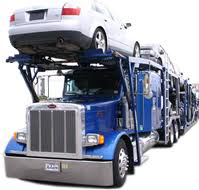
Understanding car insurance rates can often be a confusing process. So many variables factor into calculating your car insurance rates that it may seem like the number was pulled out of thin air. In reality, auto insurance factors are brought about by complex formulas wrought from mountains of data and statistics, which all combine together to give each and every one of us a risk profile – that is, the likelihood that we will file a claim that requires our insurance company to pay out. Let’s take a look at some of the main car insurance factors that will affect your rate so that, the next time you’re shopping for insurance, you won’t have that dreaded sticker shock when the first bill comes in.
Many Ratings Factors Based on Demographics
Many of the factors that help you answer that question of ‘how much car is car insurance again,’ are demographics beyond your control. If you are a teenage driver, you are going to pay more than someone in their 50s, because you are far more likely to get into an accident than a middle-aged person. Likewise, men are more likely to be in a large accident than women, and, subsequently, their insurance rates tend to be higher than their female peers. These conclusions are based on statistical analysis, and not part of any stereotyping scheme, but rather the result of complex actuarial studies.
The city and state in which you reside can make a large difference on your auto insurance rates as well. For instance, people living in large cities are usually going to have higher premiums than those choosing to live in the countryside. The main reason for this, like nearly every other factor affecting your insurance rates, is based on statistics. Urban residents have a higher amount of claims due to large amounts of ‘minor’ accidents, like fender benders and damage to parked cars. Likewise, car theft, both from and of vehicles, is also higher in cities, and those high car insurance rates that you will pay help offset the insurance companies’ increased costs. Geographic regions in general also play a factor, and it’s why car insurance rates by state lists exist. Certain sections of the country, like the northeast, are more likely to be in a claimable accident than those in the midwest.
Personal Driving Habits Also a Factor
Perhaps the largest factors affecting your car insurance rates have to do with the car you drive, the way you drive, and the type of coverage you chose for yourself. The insurance rates, unsurprisingly, are vastly different for a Lamborghini Murcielago and a Honda Accord. The reasons are twofold: not only is a Lamborghini much more expensive to repair and replace than the Accord, but the Murcielago’s accident rate is also much higher on a per mile driven basis than the Accord. Driving a ‘boring’ and safe vehicle puts you at a smaller statistical risk for both accidents and injuries, which means your insurance company is less likely to have to pay a claim on your behalf, and can thereby reduce your insurance rates. Likewise, people with a history of accidents and tickets are going to have higher rates than those without a history of such problems. A 50-year-old woman without any at-fault accidents or tickets on her record is going to be offered a reduced rate over a 50-year-old woman with five accidents in the last ten years and six speeding tickets. The type of coverage you chose, whether liability-only, full, theft, or otherwise can vastly affect how much you pay each month. Full coverage is more expensive, as it requires your insurance company to repair or replace your vehicle even if you are at fault, and ‘extras’ like theft and towing coverage on your vehicle only pushes premiums higher. Dropping extra coverage is the easiest way to reduce your bill, and is the car insurance factor most easily in your control.
Armed with this knowledge, you can not only be more prepared for your next visit or call to an insurance company, but also be better able to predict and budget for your auto insurance bill. Similarly, changing the factors you can control, and understanding how and why you can’t affect others, will help you lower your car insurance rates in the long term, as well as have more realistic expectations of what to expect when you get that insurance quote.




